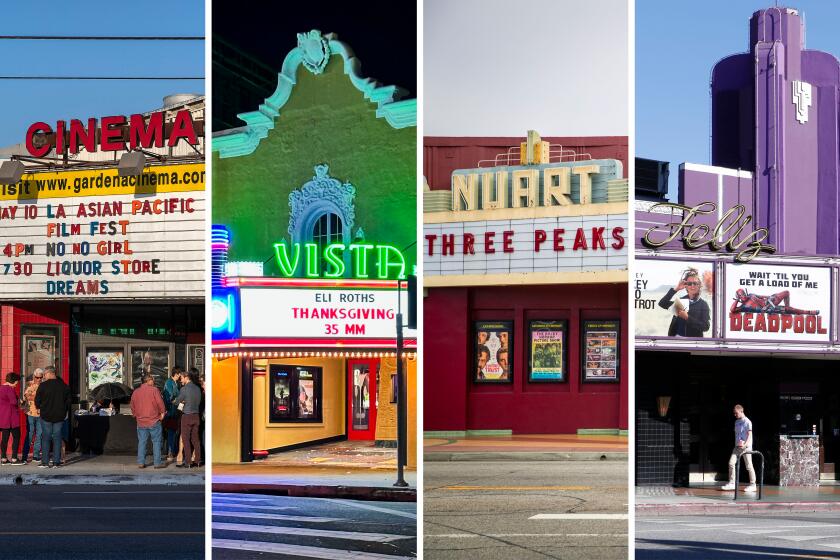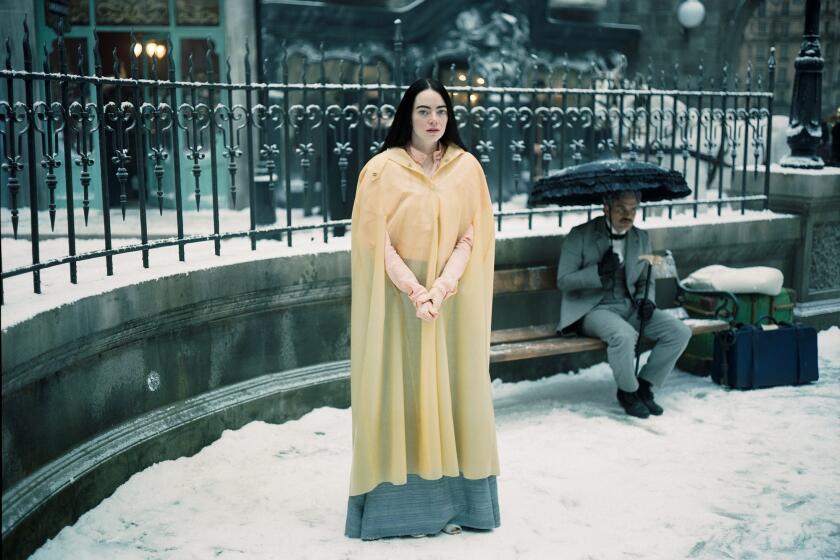After ‘The Favourite,’ Yorgos Lanthimos could do anything. He went wilder than ever
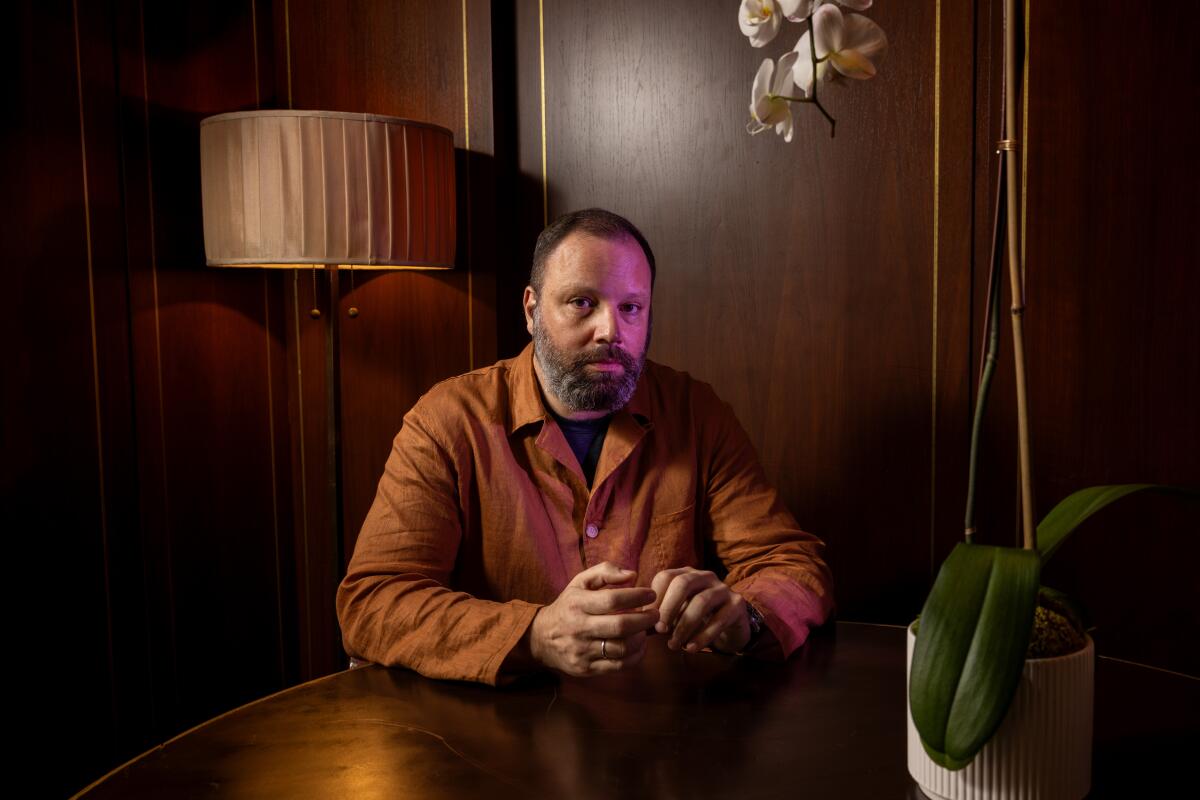
- Share via
In 2010, following the success of his breakout film, “Dogtooth,” Greek director Yorgos Lanthimos came to a fork in the road.
A bizarre, absurdist dark comedy about three siblings kept confined at home by their controlling father, “Dogtooth” had stunned audiences at the 2009 Cannes Film Festival with its deadpan perversity, earning an Oscar nomination for foreign language feature. Always on the lookout for exciting new talent, Hollywood producers, agents and executives wanted to see what Lanthimos, who’d made a handful of eccentric features and shorts in his native language, was all about. So the director flew to Los Angeles to make the rounds.
It was an awkward fit.
“It just felt strange,” the 50-year-old Lanthimos, who is a connoisseur of strangeness, recalled on a recent rainy morning in L.A. “People want to meet you because the film is nominated. But do they really?”
Eventually, his reservations got the upper hand. “I was toying with the idea of maybe finding a project,” he says. “But when it came down to seriously consider it, I always had my own stuff. And as time went by, I realized I just can’t make anything without having total creative freedom.”
While another director might have leveraged the career heat to try to sign onto a franchise, Lanthimos continued to chart his own idiosyncratic path; his first English-language film, 2015’s “The Lobster,” was an arguably even weirder comedy set in a dystopian near future in which single people are forced to find romantic partners to avoid being turned into animals. Instead of bending to suit Hollywood, Lanthimos let Hollywood come to him, as stars like Colin Farrell, Nicole Kidman, Olivia Colman and Emma Stone eagerly signed on for the chance to work with the audacious, boundary-pushing filmmaker.
Now, Lanthimos is set to release his most ambitious movie to date, the wild, provocative “Poor Things” (in theaters Dec. 8), a “splendidly deranged science-fiction-horror-comedy-fantasia,” in the words of Times critic Justin Chang, that could open up the filmmaker’s off-kilter vision to his widest audience yet.
An eye-popping, mind-bending and frequently jaw-dropping feminist twist on “Frankenstein,” “Poor Things” stars Stone as Bella Baxter, a young woman living in a steampunk version of Victorian London who after committing suicide is brought back to life by a lonely surgeon (Willem Dafoe) who becomes her caretaker. A fully grown woman with the mind of a child, Bella soon runs off with a debauched lawyer (Mark Ruffalo) and embarks on a globe-trotting odyssey of sexual liberation and personal discovery.
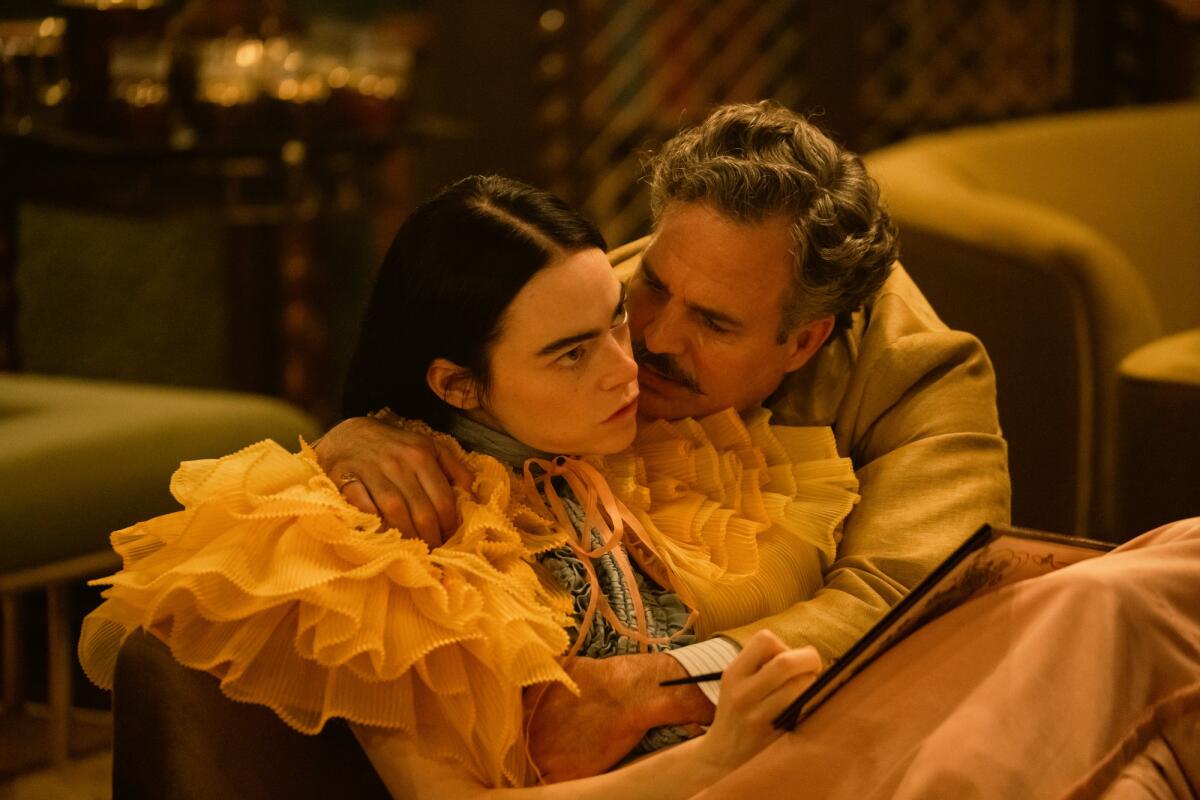
“Poor Things” arrives in theaters on a wave of acclaim that has been building for months since the movie won the Golden Lion at September’s Venice Film Festival. Following the success of Lanthimos’ gonzo 2018 period comedy “The Favourite,” which earned 10 Oscar nominations including best picture and director, many are expecting “Poor Things” to be a similarly formidable awards contender. Stone, who earned a supporting actress nomination for her turn in “The Favourite” and has become a close friend and muse to Lanthimos, is considered a lock for a lead actress nod for her fierce and fearless Bella.
With a budget in the ballpark of $35 million, more than double that of “The Favourite,” Searchlight’s “Poor Things” is Lanthimos’ biggest swing yet. For a director who is used to provoking uncomfortable if not horrified reactions to his films, he now finds himself in the unfamiliar position of having a potential crowd-pleaser on his hands — albeit an uncompromisingly Lanthimosian one, best suited to an adventurous crowd.
“It looks like people are enjoying the film,” says Lanthimos, who is as low-key and modest in person as his movies are extreme. “That’s always good. You can’t complain about that.”
Love or hate “Poor Things” — if you see it as a sharp commentary on the patriarchy or simply a bawdy, over-the-top romp — that’s up to you, Lanthimos says. He never wants to tell an audience what to think.
“I hate being didactic,” he says. “I feel like whatever we make should be somehow open enough that people can perceive it any way they want. At least, that’s how I approach it.”
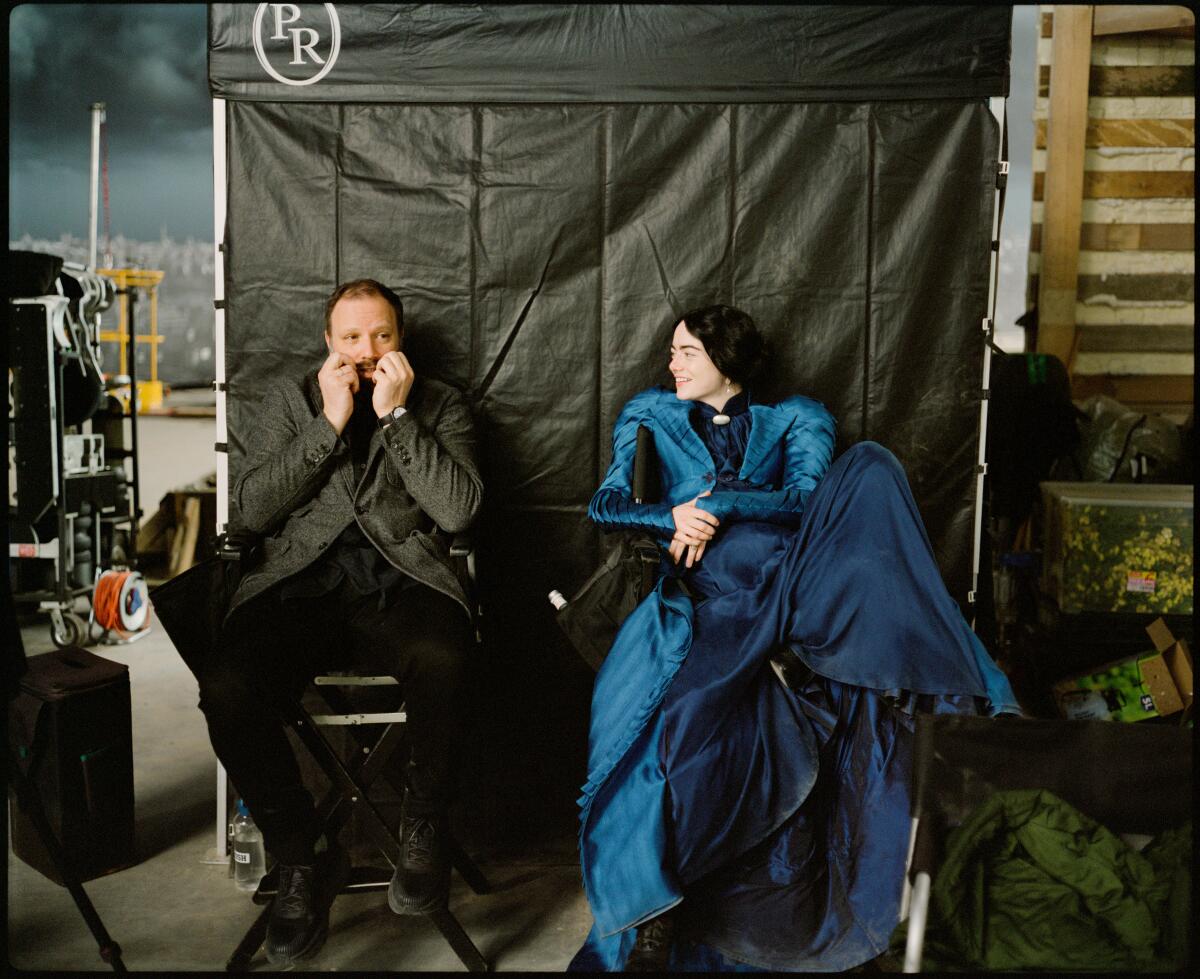
Lanthimos first read Alasdair Gray’s 1992 novel “Poor Things,” on which the film is based, more than a decade ago and immediately connected with its skewed fairy-tale narrative and themes of power, control and identity. “I got extremely excited,” he recalls. “The character of Bella, the tone, the humor, the world it created, the Gothic element — I don’t think I’d read anything like it before.”
Unable to secure financing at the time for such a large-scale project, Lanthimos put “Poor Things” on the back burner. But his enthusiasm never waned, and after finishing “The Favourite,” he pitched the idea to Stone.
The actor instantly jumped at the prospect of playing a woman liberated from any sense of shame or societal pressure, signing on to produce the film as well as star in it. “Just from the premise alone and his explanation of Bella, I was totally in love,” Stone says by phone. “She’s my favorite character ever.”
We’ve mapped out 27 of the best movie theaters in L.A., from the TCL Chinese and the New Beverly to the Alamo Drafthouse and which AMC reigns in Burbank.
Lanthimos and Stone knew that diving into Bella’s story would require boldly exploring the character’s burgeoning sexual appetite, which alternately shocks and seduces those around her. For Stone, who has also shown off her daring streak this year on the oddball Showtime series “The Curse,” that meant doing the kind of nudity and explicit sex scenes that stars often avoid. “It was clear that we couldn’t make a prudish film,” says Lanthimos. “If we shied away from Bella’s sexuality, it would feel totally disingenuous to the character.”
Lanthimos and Stone spent months developing how Bella would look, move and sound, cementing the creative bond they had formed on “The Favourite.”
“We just get along,” says Stone. “We’re able to make fun of each other and share perspectives that might be different. It’s extremely helpful to have that level of comfort, especially when you’re working with subject matter like what’s in this movie. You need to have that kind of trust to be able to let go and know that the captain of the ship is there to really guide things.”
To create the film’s bizarro version of Victorian society, Lanthimos and his creative team, including production designers Shona Heath and James Price, took inspiration from movies as varied as Luis Buñuel’s 1967 psychodrama “Belle de Jour,” Federico Fellini’s 1983 spectacle “And the Ship Sails On” and Francis Ford Coppola’s visually sumptuous 1992 “Dracula.”
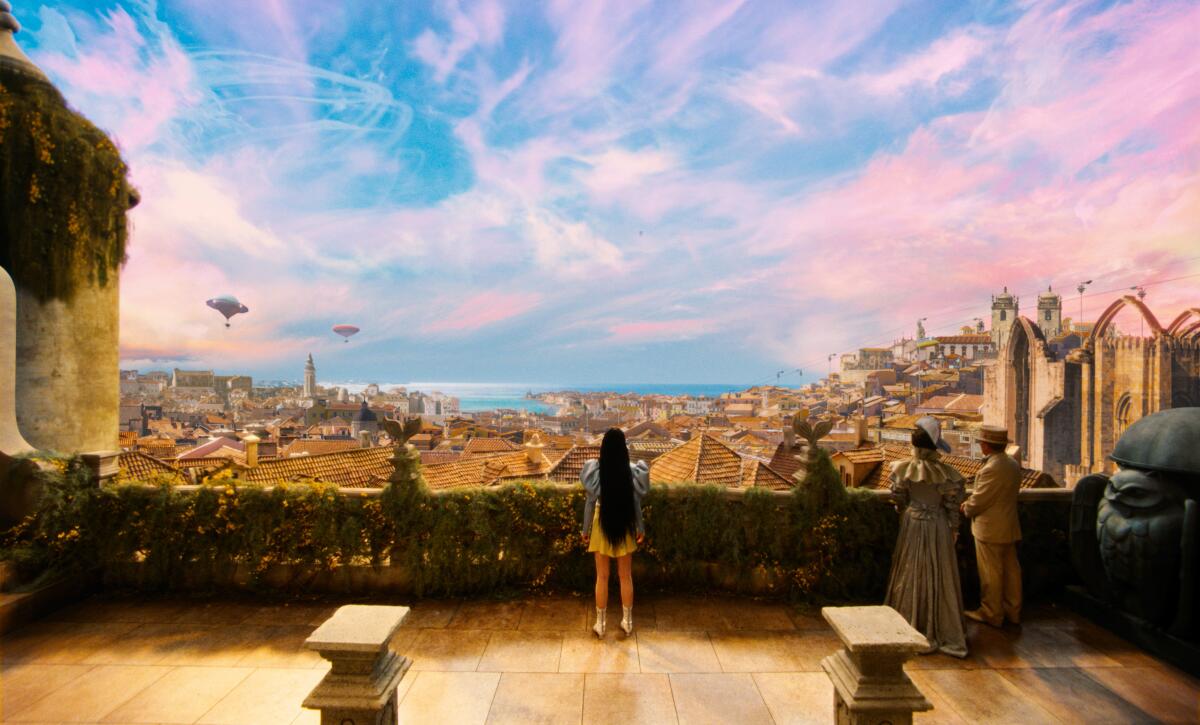
Under Lanthimos’ direction, the film’s production team built the script’s elaborately stylized versions of Paris, London and Lisbon from scratch, constructing massive sets on soundstages in Budapest and employing old-school techniques like miniatures and painted backdrops instead of relying on extensive CGI.
“I wanted it to feel like a familiar period and a familiar place but also make it unique to Bella’s perspective,” says Lanthimos, who had the movie shot on specially manufactured 35mm Kodak Ektachrome stock for its vibrant color. “We wanted to introduce elements that would make it feel futuristic from the perspective of that period.”
Before shooting, Lanthimos gathered his cast, which also includes Ramy Youssef, Jerrod Carmichael and Christopher Abbot, for a rehearsal period, leading the performers through a series of theater games designed to break down their inhibitions, as he had done on his previous pictures.
“I think we spent maybe 20% of the time actually reading the script, and the rest we’d play all day,” Ruffalo says by phone. “We would do things like puppeteer someone while they said their lines or touch each other’s faces and talk about the most beautiful parts of them between each line. It all came through this kind of physical play. I think that’s why we could push things in the film as far as we did without actually breaking it. Because we’d done it already, in a way.”
Such rehearsals, Lanthimos says, are the only part of the entire filmmaking process he truly enjoys. “It’s so free, and there’s no consequences,” he says. “You can have fun and bond and just have a dream of what this is going to be.”
He pauses and lets out a small sigh. “And then, of course, it’s shattered.”
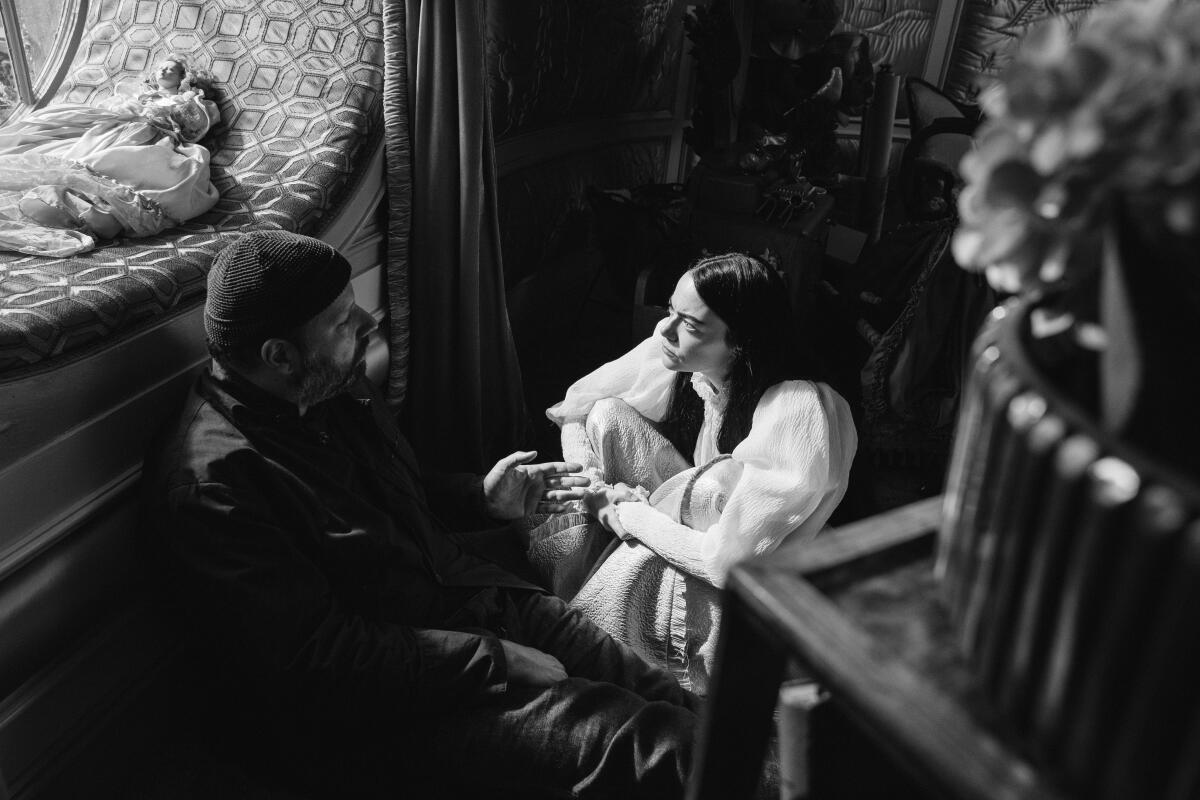
Lanthimos never actually set out to become a filmmaker. Growing up in a country with no significant film industry, the notion of making movies was initially inconceivable. “It would be laughable,” says Lanthimos, whose mother worked in an appliance store and whose father was a professional basketball player. “There wasn’t such a thing.”
Lanthimos cut his teeth by directing hundreds of TV commercials, along with music videos and experimental dance and theater productions, and he was nearly 30 by the time he made his feature debut, 2001’s “My Best Friend.” With his third movie, “Dogtooth,” he kicked off a long-standing collaboration with screenwriter Efthymis Filippou.
Even as he started making a name for himself as a filmmaker, Lanthimos had no overarching career plan. “We would just write a script and make it,” he says. “Write something, do it, write something, do it.”
Soon, critics had given a name to the burgeoning movement that Lanthimos had sparked: the Greek Weird Wave.
Based on his films, many assume that Lanthimos is indeed weird, or perhaps even emotionally troubled. “Has anyone checked if Yorgos is okay?” reads one review on Letterboxd of his unsettling 2017 psychological thriller “The Killing of a Sacred Deer,” in which a disturbed teenager insinuates himself into the life of a successful heart surgeon. (“I remember when Yorgos told me the premise of ‘Sacred Deer,’ I was like, ‘That’s a terrible idea. You definitely shouldn’t make that,’ ” Stone says with a laugh. “But he did anyway.”)
Lanthimos, who comes across in conversation as personable and altogether normal, says he is simply going where his curiosity and imagination take him.
“I think most of us have things in our heads that we don’t necessarily share, and maybe some people decide to be more open about those things and that’s considered strange,” says the director, who lives in London with his wife, actor and director Ariane Labed. “But I think I’m not necessarily that different. I don’t have answers, but I love questioning the state of things, exploring human behavior and nature. Otherwise, it just feels boring to me.”
Premiering at Venice and Telluride, Yorgos Lanthimos’ ‘Poor Things’ and Pablo Larraín’s ‘El Conde’ find their filmmakers revisiting old terrain with rewarding results.
While his films take a rather dim view of human nature, he insists he’s not a misanthrope. “I guess when you look at the totality of the work, you go, ‘Oh, that’s quite pessimistic,’ ” he says. “Asking questions about difficult subjects and relationships always leaves you with a kind of complicated aftertaste. But I think that’s important. I couldn’t imagine myself making a film about something which was resolved and pleasant and positive. Because then what would be the point of making the film?”
Exploring this dark territory comes with a price for Lanthimos, who finds nearly every phase of film production aside from rehearsal overwhelmingly stressful.
“We had so much fun during rehearsal, then we got on set and it was a different vibe,” says Ruffalo. “He looks like he’s in misery. Sometimes I would hear a laugh. Nothing gave me more joy than knowing that I could elicit a laugh from Yorgos Lanthimos.”
“After I finish a film, I’m always going, ‘I’m not making another one, this isn’t worth it, I can’t do this,’ ” says Lanthimos. “Then a year goes by and you forget about the bad stuff and you just want to do it again. Because, of course, there are moments that are magic and so beautiful to go through.”
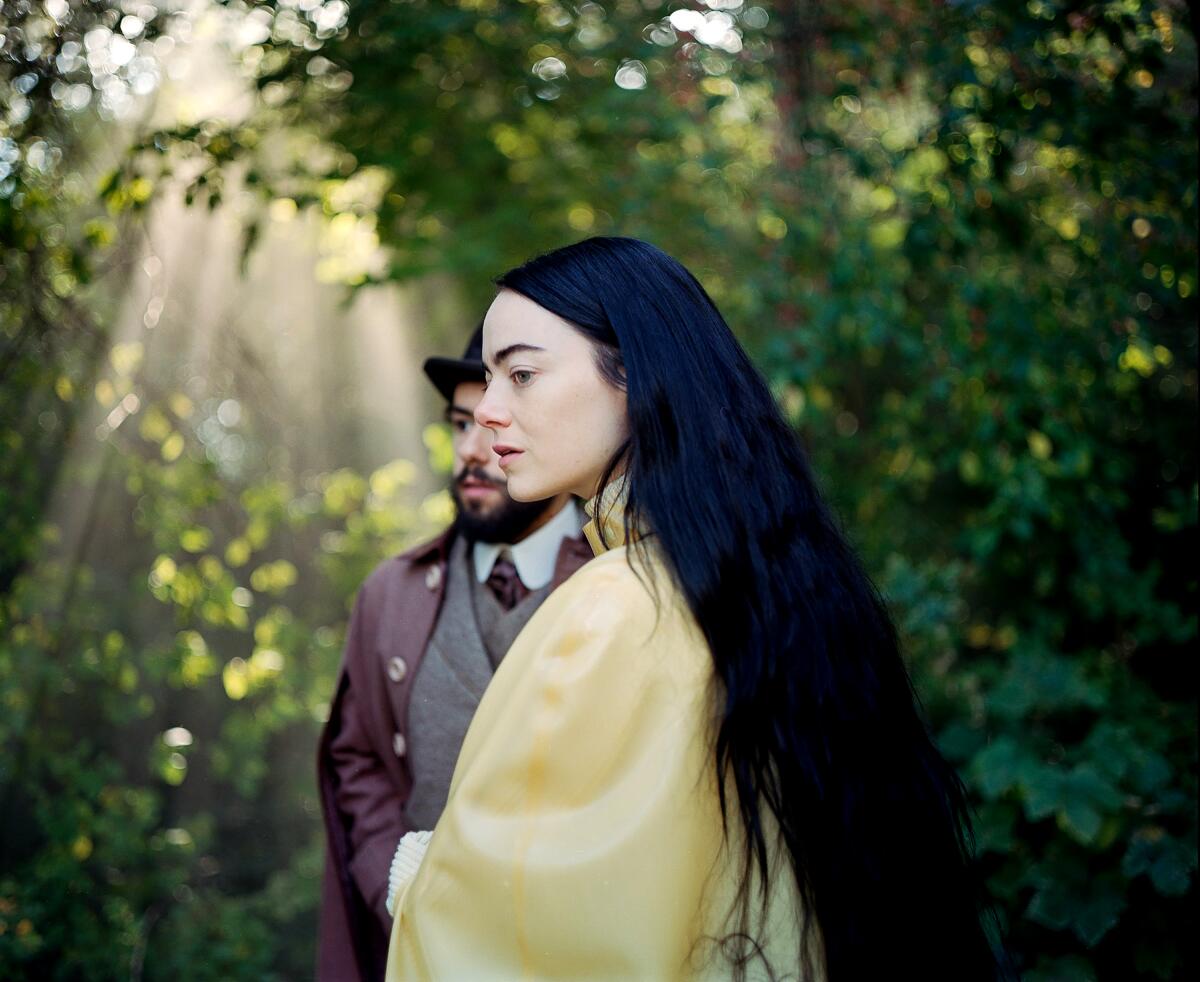
Lanthimos has already shot his next project, an anthology film called “And” that marks his fourth straight collaboration with Stone. (The two also made a 30-minute short last year called “Bleat,” a silent, black-and-white mood piece on sex, death and, yes, goats that was commissioned by the Greek National Opera.) “There are three stories in the film, and there’s a core of five actors that play one character in each story,” he says. “It’s very different: simpler, contemporary.”
Sometimes Lanthimos thinks about stepping away from making movies forever. “The world of filmmaking is obviously going to change, and if it doesn’t satisfy me anymore, I will just try and find joy in something else,” he says. “If we can’t shoot on film anymore and everything becomes digital, or if nobody watches films in the theater anymore, do I want to keep making them? Will I find something else that intrigues me? I just don’t know.”
He fantasizes about spending his days taking photos and developing them in his darkroom, where he has total creative control and doesn’t need to worry about budgets and crews and schedules.
“Sometimes I’m like, ‘Why don’t I just do that?’” he says. “It’s so much simpler. Just you and your little camera. You have so much control over it and you see the results immediately and you don’t need anyone.”
Stone is skeptical about Lanthimos’ dream. “I think that would make him crazy too,” she says.
More to Read
Only good movies
Get the Indie Focus newsletter, Mark Olsen's weekly guide to the world of cinema.
You may occasionally receive promotional content from the Los Angeles Times.
